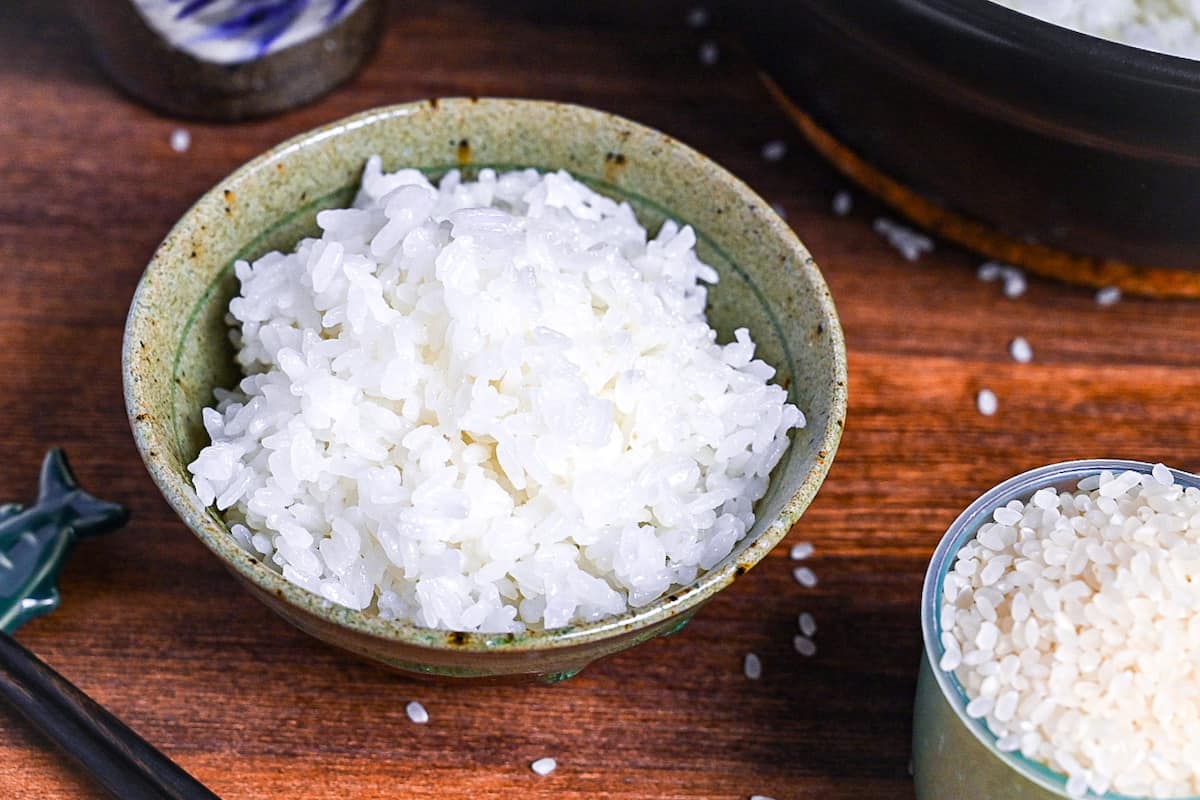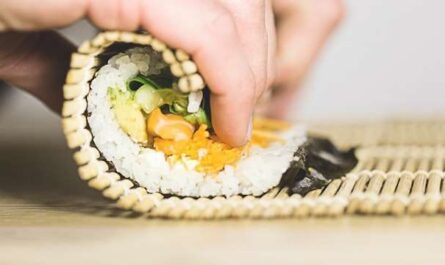Sushi rice for chirashi bowls is an essential part of the culinary art that brings this traditional Japanese dish to life. Preparing perfect sushi rice creates a flavorful base, complementing the vibrant variety of ingredients typically layered in these bowls.
In this article, we delve into the nuances of making sushi rice specifically tailored for chirashi bowls. From the choice of rice grain to the method of cooking, every step affects the delicacy and authenticity of this dish. Beginners and seasoned cooks alike will discover tips to refine their skills and bring an authentic touch to their own Japanese cuisine.

What is Chirashi and Why is Sushi Rice Important?
Chirashi, also known as scattered sushi, is a delightful dish that features seasonal ingredients artistically spread over a bed of sushi rice. The word ‘Chirashi’ translates to ‘scatter’, highlighting its vibrant and relaxed presentation style compared to traditional sushi.
The sushi rice serves as the canvas for all other components. Its sticky yet fluffy texture must be perfect, juxtaposing the fresh ingredients while absorbing and highlighting their flavors. For more insights on yamadanishiki rice features, a favored variety in Japanese cuisine, visit this link.
The Best Rice for Sushi Rice
The preferred choice for sushi rice, especially in chirashi bowls, is short-grain rice. Its ability to hold moisture and stick together is crucial. Varieties like Koshihikari and Calrose are popular due to their unique characteristics that hold up well under seasoning.
If youre considering alternatives, read our detailed guide on sushi rice alternatives, which explores gluten-free options among others.
Preparing the Perfect Sushi Rice
Achieving the right texture involves several key steps, starting with the thorough rinsing of the rice to remove excess starch. The rinsed rice should sit and drain to improve its texture.
Cooking Sushi Rice: A Step-by-Step Guide
- Rinse and Soak: Thoroughly rinse the rice until the water runs clear, then soak it for about 30 minutes. This initial step is vital to ensure the grains are tender and plump. Check out our soaking tips for more detailed techniques.
- Cooking: Use a rice cooker or pot, with a standard water-to-rice ratio of approximately 1:1. Even and slow cooking is crucial, allowing rice to rest afterward for ten minutes.
- Seasoning: Prepare sushi vinegar by mixing rice vinegar with sugar and salt. Mix gently into the rice while ensuring the grains remain intact.
Tools and Techniques for Optimal Results
Investing in quality tools like a good rice cooker or heavy pot can significantly improve your cooking outcomes. For insights on efficient cookware, you might want to visit our article on sushi rice pots.
Understanding the Balance of Flavors
The perfect sushi rice balances sweet and sour flavors. Proper blending of vinegar, sugar, and salt along with precise timing when mixing with the rice can create a memorable taste that will elevate your chirashi bowl.
Common Mistakes to Avoid
- Overcooking: Results in mushy rice, difficult to handle and unpleasing in texture.
- Underseasoning: May lead to plain rice, overshadowing other ingredients in the bowl.
Pairing Sushi Rice with Chirashi Ingredients
The flavorful dance between the delicate sushi rice body and vibrant toppings like sashimi, vegetables, and seaweed defines a chirashi bowls character.
Innovative Combinations
Exploring seasonal ingredients is a traditional approach but don’t shy away from combining unconventional flavors to cater to modern tastes. Consider pairing tart citrus fruits or spicy sauces with your chirashi.
Maintaining Freshness in Ingredients
Using fresh, high-quality ingredients is paramount. Balance raw and cooked elements, and sprinkle toppings just before serving to maintain their freshness.
Serving Suggestions and Garnishes
Once your chirashi bowl is assembled, consider serving with pickled ginger, wasabi, or a drizzle of ponzu sauce. These elements add an extra layer of depth to the dishes intricate flavors.
The Cultural Significance of Chirashi
Through its simplicity and diversity, chirashi connects people to the heart of Japanese culture. It celebrates the abundance of the land while emphasizing mindfulness and harmony in dining.
Connecting with Traditions
Though it requires expertise/skill, the joy in preparing and eating chirashi is in its natural symphony of flavors and its reflection of seasonal shifts.
Moreover, understanding different rice varieties can enhance your cooking experience. For comprehensive knowledge on rice differences, visit this useful guide by Martha Stewarts observations.
Recipes to Unlock Your Inner Chef
Explore various ways to enjoy chirashi by incorporating elements like soy-marinated seafood, tofu, or grilled vegetables, which can bring about unique textures and tastes.
Simple Chirashi Bowl Recipe
Begin with well-prepared sushi rice topped with delicate slices of sashimi, julienned vegetables, and flavorful seaweed. Experiment with garnishes incorporating toasted sesame seeds or lightly seared tuna.
Vegetarian Variations
Substitute sushi fish with marinated tofu or tempeh, and choose a selection of vegetables that add color and nutrition, such as avocados and cucumbers.
Conclusion: Embracing the Art of Sushi Rice for Chirashi Bowls
By mastering sushi rice for chirashi bowls, you’re embracing an art form that appeals to the senses and nurtures cultural appreciation. The balance of taste, texture, and presentation transforms your table into a platform of culinary delight.
Bringing It All Together
Whether you’re a novice or a seasoned cook, remember that each bowl of chirashi you create tells its own story, a narrative of flavors, seasons, and personal touch.

FAQs on Sushi Rice for Chirashi Bowls
What rice is used for chirashi bowls?
Short-grain rice, like Koshihikari, is traditionally used due to its sticky texture that makes it ideal for chirashi bowls
Can I prepare sushi rice without a rice cooker?
Yes, preparing sushi rice stovetop in a sturdy pot is possible. Follow similar steps of rinsing, soaking, and cooking over low heat for best results
How do you store leftover sushi rice?
Store leftover rice in an airtight container in the fridge, and reheat gently with steam or wrap in plastic wrap to preserve moisture before serving again.
This article contains affiliate links. We may earn a commission at no extra cost to you.



